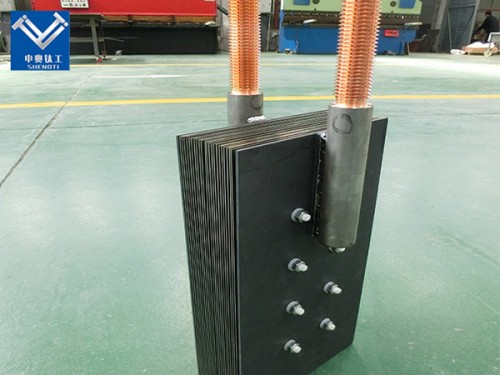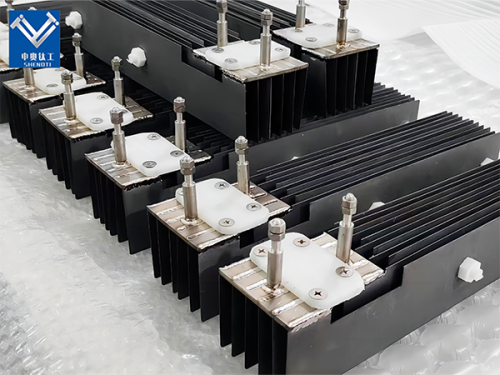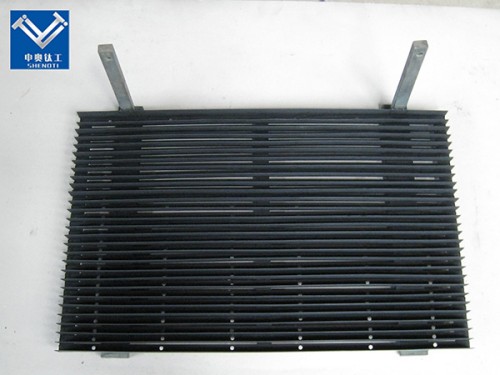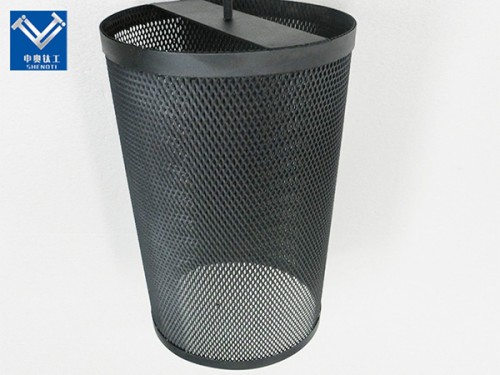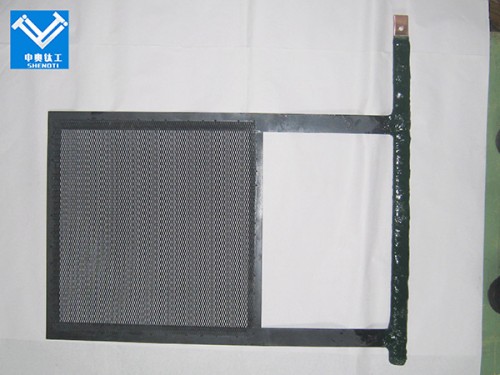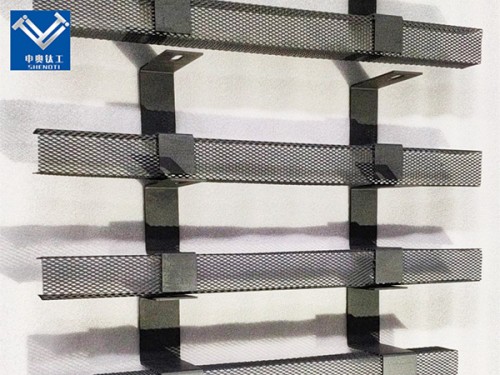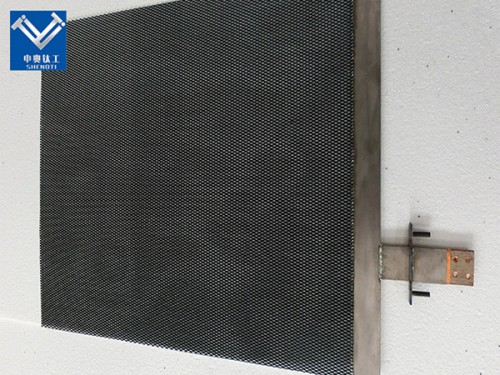
Why Choose Titanium Electrodes for Salt Water Electrolysis?
2025-06-11 16:57:24
Why Choose Titanium Electrodes for Salt Water Electrolysis?
Saltwater electrolysis is pivotal in industries like chlor‑alkali production, seawater disinfection, desalination, and hydrogen generation. However, using saltwater brings corrosive challenges—high chloride content and oxidative conditions degrade ordinary electrode materials like graphite or stainless steel.
1. Why are titanium electrodes ideal for salt water electrolysis?
Corrosion resistance
Titanium forms a stable, passive TiO₂ surface film in chloride-rich environments, making it highly resistant to corrosion—even under aggressive electrolysis conditions
By contrast:
Graphite disintegrates and contaminates electrolytes.
Lead/SS304 degrade quickly under chloride attack or at anodic potentials .
Titanium’s corrosion resistance ensures long-term stability—even in seawater or industrial brine.
Electrical conductivity & catalytic coatings
Bare titanium has limited conductivity due to its oxide passivation layer. But when coated with mixed metal oxide (MMO) or platinum group metals (PGMs), it becomes a highly effective anode material
MMO coatings (e.g., RuO₂, IrO₂) lower overpotential, boosting reaction efficiency
Pt, Ir coatings offer exceptional catalytic activity for oxygen/chlorine evolution
Result: Efficient electron transfer, lower energy losses, and faster chlorine/hydrogen production.
Mechanical strength & reliability
Titanium boasts high strength-to-weight ratio and mechanical robustness. It can be formed into rods, meshes, wires, plates—tailored geometries for specific electrolyzer designs
Unlike graphite (which deforms/deteriorates over months), titanium holds its shape over years. Also, it resists physical and pressure stress in industrial environments .
Longevity = Cost-effectiveness
Though titanium electrodes cost more upfront than graphite/SS, their lifespan (6–20+ years) easily outweighs the cheaper alternatives that need frequent replacement
Graphite anodes last ~8 months.
Titanium-MMOs exceed 6 years in chlor-alkali systems
Titanium-Platinum/Ir-based systems can survive decades .
Lower maintenance, fewer replacements, less downtime = smaller total cost of ownership.
Versatility across applications
Titanium electrodes serve in many electrochemical fields:
Chlor-alkali: Brine → Cl₂, NaOH, H₂ with MMO-coated anodes
Seawater treatment/disinfection: Efficient chlorine generation and microbial control
Desalination & electrodialysis: Ion removal with long-term stability
Electrowinning/recovery: Precious metals, copper, zinc with low contamination .
Green hydrogen: Coated Ti anodes in PEM electrolysis
Titanium acts as substrate or cathode—widely applicable across chemistries and workflows.
Environmental & operational benefits
Titanium is non-toxic, recyclable, and supports cleaner electrochemical methods. Combined with catalytic coatings, this promotes energy savings and environmentally friendly electrolytic processes
In chlorination, titanium enables stable chlorine output, softer water quality, and reduced chemical transport—the hallmarks of sustainable water treatment
2. How do coatings on titanium electrodes improve their performance?
Why coatings matter
Pure titanium forms a non-conductive oxide layer that hinders anodic reactions at high voltages
. Coatings solve two issues:
Provide catalytic activity.
Prevent passivation and boost conductivity.
Mixed Metal Oxide (MMO) coatings
MMOs—like RuO₂/TiO₂ or IrO₂/Ta₂O₅—are widely used
Benefits:
Lower overpotential, higher chlorine/oxygen output
Durable against corrosion and high current .
Support higher current densities and compact electrode designs
Platinum-group metals
Pt or Ir plating provides stellar catalytic activity:
Pt coated titanium is top-tier for hydrogen/oxygen evolution / chlorine generation
Pt/Ir coatings yield low overpotential, longer catalyst life, superior conductivity
3. Can titanium electrodes outperform graphite and stainless steel in corrosive saltwater?
Graphite vs. titanium
Dissolution: Graphite erodes, contaminates products, and requires frequent replacement (~8 months) .
Corrosion: Titanium with coatings resists corrosion and lasts for years
Product purity: Titanium avoids contamination from graphite by-products.
Stainless steel vs. titanium
Oxidation: SS304 still oxidizes and deteriorates in alkaline/chloride environments .
Conductivity: Titanium coatings provide superior conductivity, allowing lower voltage and heat
Current density: Titanium supports much higher densities (17 A/dm² vs 8 A/dm² for graphite)
Lead vs. titanium
Toxicity: Lead causes environmental/health hazards and is limited to cathodic use.
Longevity: Titanium lasts far longer and avoids contamination, making it safer and more durable .
4. What makes titanium electrodes cost-effective over time?
Total Cost of Ownership (TCO)
Titanium's upfront cost is higher, but usage data show rapid ROI due to:
Years of service (6–20)
Lower energy costs via reduced overpotential
Minimal replacements and labor savings
Graphite and SS require frequent replacements (months to a few years) and increase downtime costs
Energy savings
Coated titanium reduces power consumption by 10–20% through low overpotential and stable cell voltage
Maintenance reduction
Titanium cells cut labor hours and complexity of routine maintenance. Reduced replacements mean less downtime and higher operational efficiency .
Environmental cost mitigation
Longer electrode life, lower contamination, and recyclable properties mean reduced waste—even factoring disposal of other materials .
5. Are titanium electrodes safe for industrial seawater electrolysis?
Operational safety
Titanium’s chemical inertness and structural stability minimize hazards. Coated electrodes prevent leakage and secondary pollution .
Disinfection and user experience
In pool systems, titanium chlorinators yield stable chlorine production, softer water, reduced skin/eye irritation, and eco-friendly operation
Reactor design and scalability
Compact, high-performance titanium electrodes fit well in modern systems, including PEM or membrane-based setups. Smart coatings allow for advanced cell designs .
6. How are titanium electrodes used in green hydrogen and modern PEM systems?
PEM electrolysis uses titanium substrates and platinum-coated titanium bipolar plates, yielding high hydrogen production efficiency (>0.6 A/cm²) and long lifespan (~10–20 years)
Titanium electrodes—especially when properly coated—offer a superior alternative for saltwater electrolysis. They excel in:
|
Feature |
Benefit |
|
Corrosion Resistance |
Long-term life even in harsh saltwater |
|
Catalytic Coatings |
Efficient chlorine/oxygen evolution |
|
Mechanical Durability |
Supports varied designs and pressures |
|
Energy Efficiency |
Low overpotentials reduce costs |
|
Cost-Effectiveness |
TCO savings outweigh initial investment |
|
Environmental Safety |
Non-toxic, recyclable, contamination-free |
|
Industry Versatility |
Suitable for chlor alkali, hydrogen, water treatment, etc. |
Contact Us
To explore titanium electrode solutions tailored for your saltwater electrolysis needs, get in touch:
Baoji City Shen'ao Metal Materials Co., Ltd. zh@baojiti.com.cn
We offer customized reactor design, coating selection, and performance optimization—reach out to discuss your project.
YOU MAY LIKE











